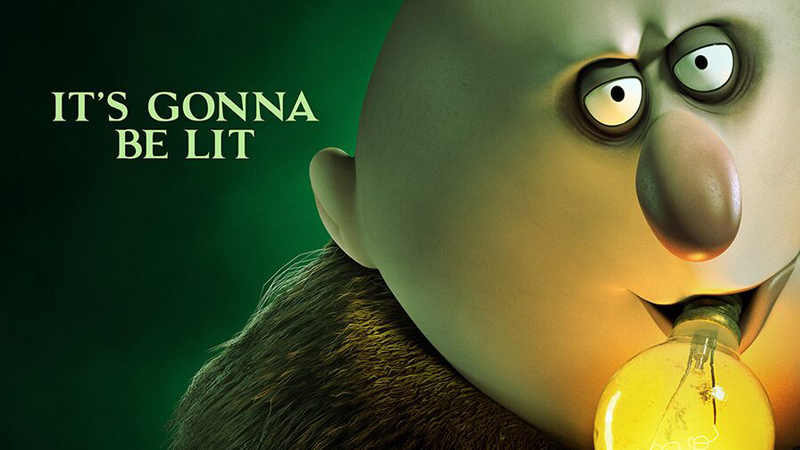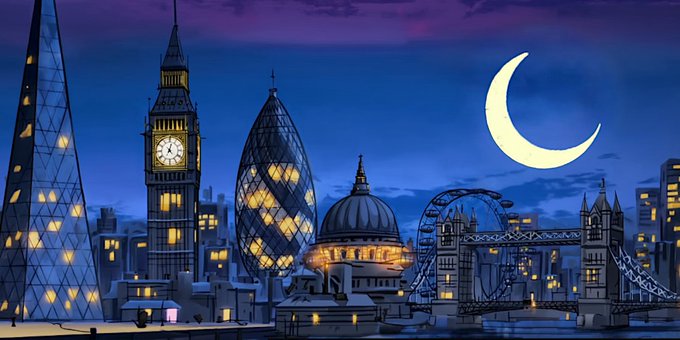
Laura Brousseau, Head of Lighting at Cinesite Vancouver, talks about the importance of lighting in The Addams Family
Why is lighting so important in animated films?
Lighting is a key tool in supporting the story visually, conveying mood and expressing emotion. The impact that lighting choices have is truly wide-ranging. It can be effective in simple ways such as directing the viewer’s eye by smartly placing our lights and shadows, or it can have a much larger and deeper effect by creating mood, reflecting what is happening in the story and expressing how our characters are feeling.
Whatever the mood may be in any given moment, lighting sets the tone of the film and reflects everything we want our viewers to see, experience and feel – it helps to bring all the other elements together into one creepy, kooky and cohesive story.
One of the reasons why lighting is so important in The Addams Family is because it clearly demonstrates the difference between the Family and the “real” world outside. We created very different looks and a big contrast between the Addams’ house and grounds, and the bright, colourful town Assimilation.
What kind of challenges did you face when lighting the environments?
In the Addams’ house, we needed to strike a balance between reflecting the Family’s personality by not having the house too brightly lit and creating a nice stage for the action to happen, for our characters to inhabit and tell their story.
We needed to be cognisant of where cameras were to be placed. Sometimes, for the sake of the story, we’re somewhere we don’t have a great light source, where there isn’t a window or any obvious means of getting interesting light onto our characters. In some shots we really had to push ourselves to come up with unique ways of getting the lighting to work. This often meant collaborating with other departments, asking, “Can we put a lamp here?”, “Can we move the action by the window?” or, “Can we have the fireplace lit?” We were considering not just how to create light sources, but also how we could create mood, making sure we were getting the right colour temperature of lights that we needed and reflecting on what we wanted our audience to feel when they’re watching that moment in the film.
How was lighting used to reflect the characters’ personalities?
For Morticia, especially young Morticia, the sequence where they’re in the back of their car thirteen years before the present-action in the movie, we did a lot of film noir-esque lighting. We had a very soft light narrowly and carefully focused around her eyes, highlighting her eyes and keeping the viewer focussed on that area because that’s where most of her emoting is coming from. We worked on creating a really soft and beautiful look for her, without losing her skeletal shape; she’s quite slender, particularly in the face. Morticia was one of the characters we probably spent most time lighting, for an aesthetic purpose.
One of the other characters which presented a more technical challenge was Margaux, with her giant hair and massive blonde bangs. Her face was often falling into shadow, but her acting is crucial in some of the most pivotal points in the film. We couldn’t lose that. So we came up with ways to create bounce light or extra fill on her, creative ways so that we could make sure our audience was always reading all of her expressions.
Was it difficult to get the characters to stand out in some of the darker environments?
Having several characters with black hair in dark interiors was sometimes tricky; we often had to add little highlights, but it was always important to retain a natural feel. We needed to be sure that our audience could fully immerse themselves in what’s going on in the shot without being taken out by bright character lighting that didn’t look like it belonged. We are often trying to strike that balance.
The séance sequence was one which particularly demonstrated this challenge. Morticia is outside and there is a sunset behind her, the house is dark and she’s in a dark cemetery. Trying to balance all of that so you can clearly see her and her silhouette, even though she’s dark, was certainly tough. We also had to integrate the light coming from Morticia’s crystal ball, which she is using to contact her parents in the afterlife, a sort of nebulous, bright, roiling effect emitting from the glass ball.
Even the sunset on the Addams’ property is unlike any natural, regular one with orange and pinks; there was the additional challenge of creating a sort of greeny, yellow, grey sunset, to maintain a reflection of the Addams Family feel and mood.
How is lighting used to reflect changes in tone in the story?
Consider one of the more sombre sequences in The Addams Family, which we called “Sad Montage”, where each member of the family is feeling low and reflecting on their relationships with each other and what they see as their own shortcomings.
There were, of course, directorial choices made for the action, animation and cinematography to reflect this very universally understood kind of sadness and loneliness. In lighting we aimed to support this important moment in the story with a predominantly cool tone from the night sky with small, soft and isolating pockets of slightly warm light. While setting that mood and atmosphere successfully required a holistic approach to the action and cinematography of the shot, it is in large part due to the lighting that we achieve a deeper cut of emotion in these moments.
In contrast, consider a lighter section of the “Family Game Night” sequence where we join our characters in their living room alive with a boisterous game of Battleship. Lit with an array of candles and a warm fireplace, the composition helps our viewers to relax, and experience the uncomplicated but joyful feeling of cosy moments spent with loved ones.
One scenario gives a feeling of despair and loneliness and the other a feeling of happiness and belonging, both of which are achieved in part through the lighting choices.
Is the lighting used to enhance the comedy or for comedic effect in The Addams Family?
At some points in the film we used gag lighting, where for example the lighting is dark and theatrical and we throw a bright light in for effect. That’s tons of fun for us to do, like theatrical stage lighting.
One example of this would be the dolly-zoom shot where Wednesday tells her brother she loves him. We did this intense lighting shift across the shot where she starts out lit by this diffuse outdoor overcast lighting and we shifted it to higher contrast, intense under-lighting to really play up the joke of the shot.
When Lurch is first introduced we did the same kind of thing. As he jumps up after being hit by Morticia and Gomez’s car he is bathed in red light, raises his hands and gives a monstrous roar. As Gomez hands him his suitcases the light suddenly drops away, Lurch looks harmless and gives a puzzled “What’s going on?” expression, completely puncturing the suspense.
Did you enjoy working on The Addams Family?
The team at Cinesite is great. We have people from all different backgrounds and different disciplines and it’s really wonderful to get to work with these people who are very enthusiastic about the craft of filmmaking.
The Addams Family is a classic and it was tons of fun, an inspired project that it was a privilege to work on. It was fun to come up with creative ways to contribute to the story visually and help make the movie more special.

